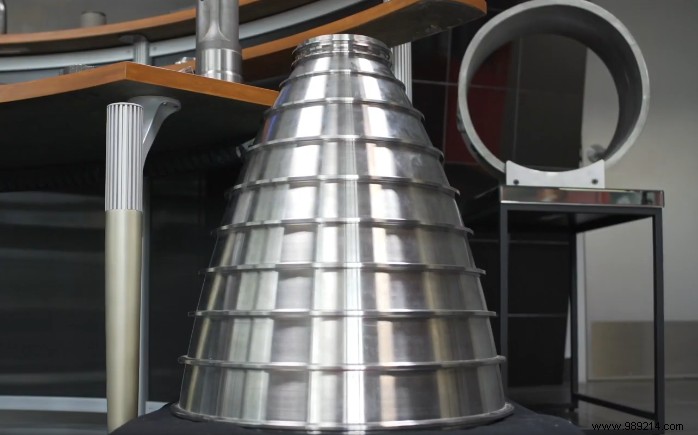As part of the Artemis program to soon send men to the Moon, NASA wants to use 3D printing to build future rockets. Currently, the agency is conducting promising tests, the results of which are not yet fully known.
In 2024, NASA wants to send the next humans to the Moon and establish a lasting presence there from 2028. The Artemis program is ambitious, although the agreements relating to it are rather controversial. More than a year ago, NASA launched the RAMPT (Rapid Analysis and Manufacturing Propulsion Technology) project to build the rockets of tomorrow. NASA has bet on metal additive manufacturing to manufacture these new rockets faster as well as components for satellites.
It is about a process called "Blown powder directed energy deposition", close to that of material deposition under concentrated energy (DED). NASA wants to focus on the nozzle and the combustion chamber, two heaviest components of the engine system – but also the most expensive to produce.

This technology is currently being tested to confirm its benefits. The researchers imagined a nozzle one meter in diameter by 0.9 meter in height composed of integrated cooling channels. The process consists of injecting metal powder into a pool of molten metal heated by laser. Next, a printhead attached to a robotic arm moves in a predetermined pattern. This builds the part layer by layer using an optical laser coming to harden the blown powder.
This nozzle should soon be tested. This includes subjecting it to a combustion temperature of 6,000 degrees . The latter will also be exposed to the same pressures as those present during the launch of a rocket. Pending the results, hope is present on the side of the researchers. Moreover, the manufacture of the nozzle took only thirty days . With conventional welding methods, such a part usually requires a year of work.
More economical and faster, this process would have a bright future and could therefore establish itself in the aerospace industry. According to officials, other sectors could benefit from it such as medicine, transport as well as the construction of infrastructures.
Here is a video presentation of this additive manufacturing process: